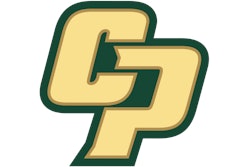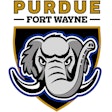Copyright 2017 Dayton Newspapers, Inc.
Dayton Daily News (Ohio)
The college football bowl season is underway - a 40-game TV bonanza that's doubled in size since 1997, morphing into an industry of its own and a monster of mixed economies.
Socialism. Capitalism. Rich and poor.
It's all brewed together to create a postseason in which 60% of all major-college football teams participate and 38 of them finish with a victory.
To shed light on how it all works, USA TODAY reviewed NCAA financial records and dozens of tax forms from bowl organizations. They show a system with many financial quirks, including a giant safety net for less fortunate leagues and sometimes even Notre Dame.
Spreading the wealth: The College Football Playoff is affiliated with only six bowl games, but it makes so much money that it subsidizes the bowl expenses of teams and conferences that never played in the Playoff.
All bowls combined last season to pay about $622 million to conferences and schools, including $441 million from the CFP. After $105 million in bowl expenses, conferences and schools combined for $517 million in bowl profit, according the NCAA financial records.
This wealth is shared with all major-college conferences. For example, Conference USA sent seven teams to bowls last year, including Old Dominion, which went to the Bahamas Bowl to beat Eastern Michigan 24-20 in front of 13,422.
None of the Conference USA bowl teams went to the Playoff, but the CFP paid the league $13.9 million in revenue sharing. If not for that, C-USA schools that went to bowls would have lost a combined $650,000 after $4.2 million in bowl expenses, records show.
"The presidents and commissioners negotiated the revenue distribution when the Playoff was created back in 2012," Playoff executive director Bill Hancock told USA TODAY. "Everyone had in mind to do what's best for college football, and that's what they did."
Special status: Notre Dame finished 4-8 last season and didn't go to a bowl game. The CFP still paid Notre Dame $2.9 million as part of its revenue-sharing plan. A year earlier, Notre Dame lost in the Fiesta Bowl to Ohio State and got $8.7 million from the Playoff.
Notre Dame's big national brand gave it leverage in negotiations. By comparison, other independent schools got $310,469 from the Playoff, including Massachusetts, which finished 2-10, and Army, which finished 8-5 and beat North Texas in the Heart of Dallas Bowl.
The Playoff owner: The College Football Playoff Administration owns the Playoff, which started in 2014. It is a for-profit entity. It is a consortium of the 10 major-college football conferences and Notre Dame. Much of its revenue comes from ESPN, which is paying $470 million to televise it. After expenses, the bowls participating in the Playoff that year get 15% while the Playoff gets the rest and shares much of it with its members.
The Power Five leagues received more than 75% of the $441 million paid out to all conferences and teams by the Playoff last season. The Pac-12, Big Ten, Southeastern, Big 12 and Atlantic Coast conferences each got about $60 million-$70 million.
The big contract: The Big Ten had $123 million in bowl revenue last season vs. $22 million in expenses. The Pac-12 had $116 million in bowl revenue vs. about $10 million in expenses.
Those huge "profits" were by far more than any other league's. That's largely because of the Rose Bowl, where Southern California beat Penn State 52-49.
Even though that Rose Bowl was not part of the Playoff, those two leagues have a huge contract with the Rose Bowl, which in turn has a huge contract with ESPN (paying about $80 million a year through 2026). These two leagues split about $73 million from the Rose Bowl, plus got about $70 million each in Playoff shares, in addition to other bowl game revenue.
But it'll be a different story this year when the Rose Bowl is part of the Playoff as a semifinal Jan. 1. Much of the Rose's revenue from that will go to the Playoff and will be shared with more than just the Big Ten and Pac-12.
"Financially, when we do a regular Rose Bowl game, the economics are little bit stronger for us than in a (Playoff) year," said David Eads, executive director of the Pasadena Tournament of Roses Association, which runs the game. "But we're obviously very supportive of the (Playoff ) model, and we are very excited to be hosting Oklahoma and Georgia in our (Playoff) semifinal game."
The big investor: Walt Disney Co. owns ESPN and ABC, which are paying to televise 35 of the 40 postseason games, including those huge investments in the Playoff and Rose Bowl.
ESPN also owns 13 major-college bowl games, mostly lower-tier games.
ESPN hopes to get a return on all these investments with advertising sales, cable and satellite subscriptions, and as many eyeballs on screens as it can get.
Read More of Today's AB Headlines
Subscribe to Our Daily E-Newsletter
Terms and Conditions Privacy Policy



































